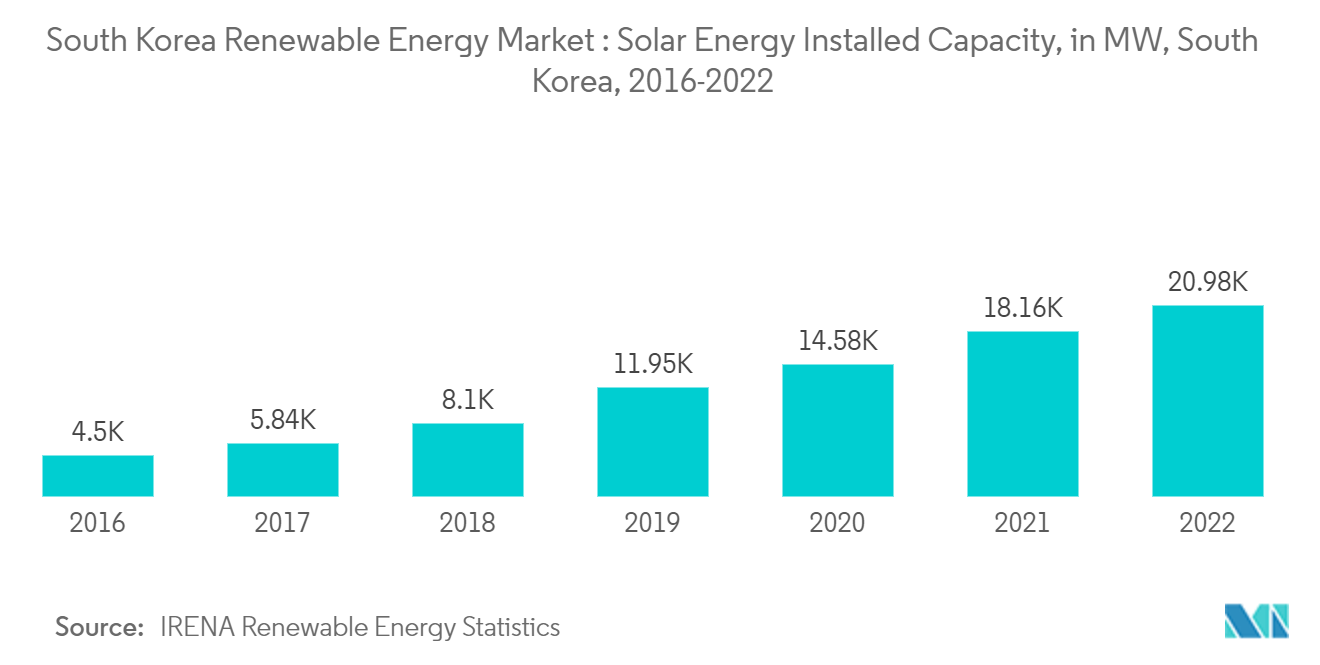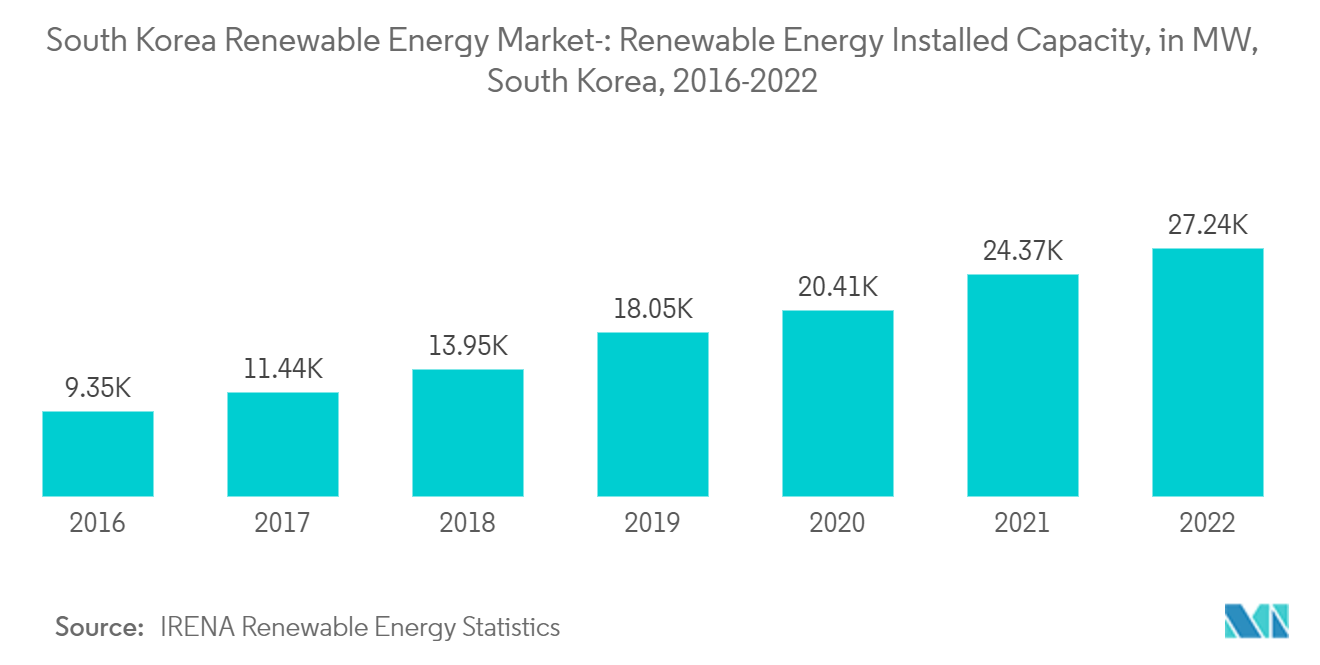Market Trends of South Korea Renewable Energy Industry
Solar Energy Segment Expected to Witness Significant Growth
- As of 2022, the solar energy installed capacity in South Korea was 20.97 GW, significantly higher than the installed capacity in 2021, which stood at 18.16 GW, signaling rapid adoption of solar energy in the country.
- Despite facing issues regarding land availability, like Japan, the country has managed to reduce installation costs through the installation of utility-scale solar farms on reclaimed land, salt flats, and floating solar PV parks. According to IRENA, the weighted average installed cost of utility solar in South Korea stood at USD 940/kW, higher than most European and North American markets but significantly lower than Japan. For instance, in July 2022, construction began on a 200 MW solar farm at a former salt farm in Sinan, South Jeolla Province.
- In May 2022, two solar-power tenders were launched by the South Korean Energy Agency (a government agency) this year. The agency plans to distribute roughly 2 GW over 4 project types for the exercise: installations under 100 kW, projects with a capacity of 100-500 kW, PV arrays with a capacity of 500-3 MW, and solar plants with an installed power of more than 3 MW.
- Additionally, the country has a significant solar manufacturing sector, which is expected to reduce supply chain costs further. Additionally, the country is expected to relax solar permitting regulations to achieve its target of reducing emissions by 40% by 2030. For instance, in December 2022, SDN, a South Korean supplier of PV modules and marine propulsion systems, announced the construction of a new factory for solar modules in Gwangju, South Korea. According to the company, the factory will be able to produce 1 GW of solar panels utilizing tunnel oxide passivated contacts (TOPCon) technology, as well as modules featuring an unspecified tandem technology. As part of its plans to deploy two 500 MW production lines by 2025, the company plans to construct the factory building by the end of 2023.
- Thus, owing to the targets set by the government of South Korea and upcoming projects, solar energy is likely to witness significant growth during the forecast period.

Increasing Investments in Renewable Energy Sector Driving the Market Demand
- As a result of the lack of sufficient natural resources, South Korea relies heavily on imported energy sources to meet approximately 95% of its fossil fuel energy requirements due to its many highly energy-intensive industries. This has enabled Korea to maintain its position as one of the world's largest importers of energy commodities, including liquefied natural gas (LNG).
- The country has seen significant growth in renewable energy in recent years, largely due to favorable government policies and rising environmental concerns. The country also set up various targets related to CO2 emission reduction and renewable energy, driving the renewable energy market in the country.
- As of 2022, the installed capacity of renewable energy in South Korea was 27.24 GW, significantly higher than the installed capacity in 2020, which stood at 24.36 GW, signaling rapid adoption of renewable energy in the country.
- South Korea set a target of a 37 percent reduction in CO2 emissions by 2030 under the Paris Agreement of 2015. In order to meet the target, all the power plants were required to decrease CO2 emissions by 40% and 58% by 2022 and 2030, respectively.
- In February 2021, the South Korean government planned to invest around USD 43.2 billion in the construction of an 8.2 GW offshore wind project by 2030 in order to meet its goals for the renewable energy sector. When completed, this project is expected to rank among the largest single offshore developments in the world. The businesses have also committed to support the project with USD 42.4 billion. The remaining USD 802 million will be provided by the government.
- In December 2022, GE Renewable Energy and Hyundai Electric announced a strategic partnership agreement as the next step in their joint efforts to serve the South Korean offshore wind market. Hyundai Electric will serve as a manufacturing associate under the terms of the agreement in order to facilitate the localization of the assembly process of the Haliade-X offshore wind turbines and generators.
- Therefore, based on the abovementioned factors, increasing investments and upcoming projects in the renewable energy sector are expected to drive the South Korean renewable energy market during the forecast period.

